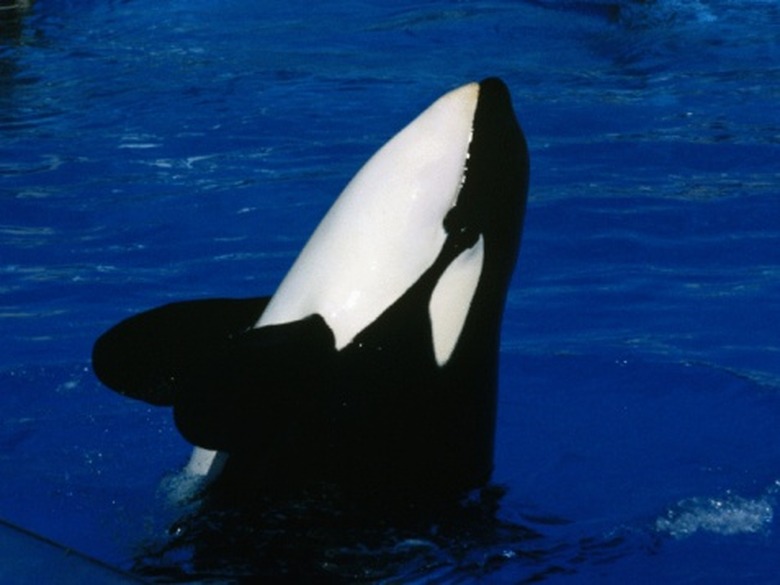What Whales Eat Penguins?
Penguins are flightless birds that live in the southern regions of the Southern Hemisphere. These birds have multiple predators in the wild. Things that eat penguins include seals, sharks and other birds.
Most species of whales are not known to prey on penguins. Killer whales, also called orcas, are an exception. These toothed marine mammals live in both the Arctic and the Antarctic. They are well-known as one of penguins' predators.
Penguin and Orca Habitats
Penguin and Orca Habitats
Penguins only live in the Southern Hemisphere. The can be found on the coasts of Antarctica, New Zealand, Australia, South Africa, South America and the Galapagos Islands. Orcas, on the other hand, live in both the Northern and Southern Hemispheres. The orcas that live in the waters surrounding Antarctica mainly eat minke whales, humpback whales and Antarctic toothfish. Orcas are also known to eat the penguins they come into contact with.
Orca Diet
Orca Diet
Orcas are known to eat several kinds of animals besides penguins and other Antarctic prey. Killer whales have been known to eat manta rays, hammerhead sharks, great white sharks, seals, sea lions, baleen whales, various seabirds, walruses, sea otters and fish from both near the surface and the bottom of the ocean. Remains of polar bears, certain reptiles and moose have been found among the stomach contents of killer whales as well.
Killer whale remains have also been found to be in the stomachs of the same species. This may be attributed to cannibalization or scavenging dead animals. So even though killer whales are some of penguins' predators, penguins are only one small part of the wide range that makes up orca diets.
This is likely because penguins are quite small compared to killer whales. In order to get enough sustenance from penguins, killer whales would need to eat quite a few. They'll expend less energy and gain more energy by hunting larger prey like seals and sharks versus tiny prey like penguins.
Other Whales
Other Whales
No other types of whales feed on penguins. Baleen whales do not have actual teeth. Baleen is made of stiff plates of keratin that hang from whales' upper jaw. Baleen whales eat by taking in large mouthfuls of water. The water filters out through the baleen, but prey like small fish and invertebrate creatures are trapped in the mouth and eaten.
Some toothed whales besides orcas include belugas, dolphins, narwhals and sperm whales. Some of these toothed whales do not share the same habitat as penguins. Others simply do not include penguins in their diets like orcas do.
Other Penguins Predators
Other Penguins Predators
Killer whales are not the only predators that eat penguins. Other penguin predators include leopard seals, sea lions and shark. All of these animals hunt in the water. Sea lions, sharks and seals eat penguins because of their high nutritional value thanks to their layers of insulating fat. Fat carries some of the highest calorie content, which is important for predators in these areas that require high calorie diets to survive the cold.
Penguins also often live in large groups, which make them a bit easier to attack and prey on since there are so many in one area. Their eggs can also be preyed upon on land by birds, snakes and other predators.
Penguins also have predators that live on the land. Small species of penguin that live in regions other than Antarctica may be attacked by lizards, snakes and ferrets. Some types of birds also prey upon sickly adults as well as young penguins. Destructive human marine practices like fishing and trolling also threaten penguins.
References
Cite This Article
MLA
Clark, Sarah. "What Whales Eat Penguins?" sciencing.com, https://www.sciencing.com/whales-eat-penguins-8177691/. 22 November 2019.
APA
Clark, Sarah. (2019, November 22). What Whales Eat Penguins?. sciencing.com. Retrieved from https://www.sciencing.com/whales-eat-penguins-8177691/
Chicago
Clark, Sarah. What Whales Eat Penguins? last modified March 24, 2022. https://www.sciencing.com/whales-eat-penguins-8177691/
